When it comes to background verification, transparency and accuracy are key to maintaining trust. Whether you're a hiring manager seeking to verify a candidate's credentials or an applicant ready to provide your history, having a clear and organized template can make the process smoother for everyone involved. This letter template not only streamlines communication but ensures that all necessary information is conveyed effectively. So, let's dive into how to create a comprehensive background verification letter that serves your needs'read on to discover our step-by-step guide!
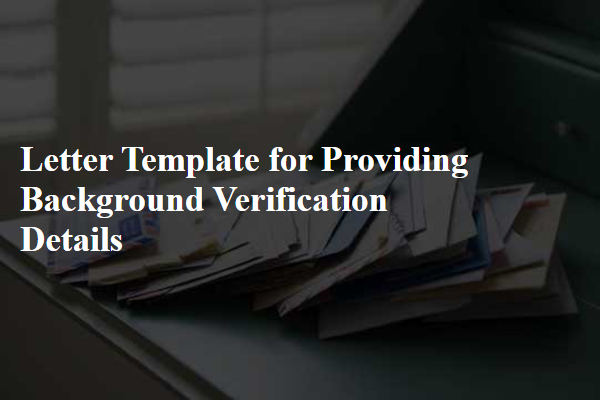
Professional Tone
Background verification processes are essential for ensuring the integrity and reliability of candidates during the hiring process. Companies, like ABC Corp, often utilize third-party services such as VerifyMe to conduct checks on employment history, criminal record, and educational qualifications. These verifications help ascertain that candidates possess the necessary credentials for specific roles. For example, verifying a candidate's prior employment at XYZ Ltd may involve contacting HR to confirm job titles, dates of employment, and responsibilities held in their position. Additionally, educational verification could include consulting institutions like University of Excellence to ensure degrees obtained align with the candidate's claims. Thorough background checks can mitigate risks associated with hiring decisions, promoting a safer and more competent workplace.
Clear Contact Information
Providing background verification details requires precise contact information to ensure efficient communication. Clear contact information should include the full name of the individual being verified, their current address, and a valid phone number. Additionally, an email address is necessary for digital correspondence. Including a clear outline of the verification request--such as employment history, educational qualifications, and reference checks--helps the verifier understand the context and purpose of the inquiry. The organization conducting the verification, such as a human resources department or a third-party verification agency, should also be clearly identified, including their contact details and relevant regulatory compliance information, such as adherence to the Fair Credit Reporting Act (FCRA).
Relevant Personal Details
Background verification processes often require comprehensive personal information such as full name, birth date, and Social Security number (SSN) for identification and security checks. Address history, including previous residences and duration of stay, is essential in tracing an individual's background, while employment history, including job titles and dates at various companies, aids in confirming professional credentials. Educational qualifications necessitate details such as institution names, degrees obtained, and graduation dates to validate academic achievements. Additionally, criminal record information, if applicable, is critical for assessing trustworthiness, while references from former employers or acquaintances can provide qualitative insights into an individual's character and work ethic.
Verification Purpose
Background verification serves multiple essential purposes in various contexts, such as employment screening, tenant evaluations, or loan applications. This process typically includes thorough investigations into an individual's professional history, which may cover previous job titles, duration of employment, and performance evaluations. Furthermore, criminal background checks assess any past legal issues that might affect trustworthiness. Educational verification confirms degrees and certifications obtained, ensuring candidates possess the necessary qualifications. Financial checks can reveal credit scores and financial stability, particularly in loan assessments or rental agreements, impacting decision-making processes. Ultimately, comprehensive background verification aims to enhance trust and mitigate risks for employers, landlords, or lenders.
Confidentiality Acknowledgment
Background verification processes ensure that information regarding employment history, educational credentials, and criminal records adheres to privacy and accuracy standards. A confidentiality acknowledgment signifies that parties involved understand the sensitive nature of the data shared during verification. Such documents outline responsibilities ensuring personal information remains protected, especially under regulations like the General Data Protection Regulation (GDPR) in Europe or the Fair Credit Reporting Act (FCRA) in the United States. Proper handling of these details is crucial, as unauthorized disclosures can lead to legal repercussions and damage reputations. The acknowledgment also specifies the retention period of information, emphasizing compliance with industry standards for confidentiality.

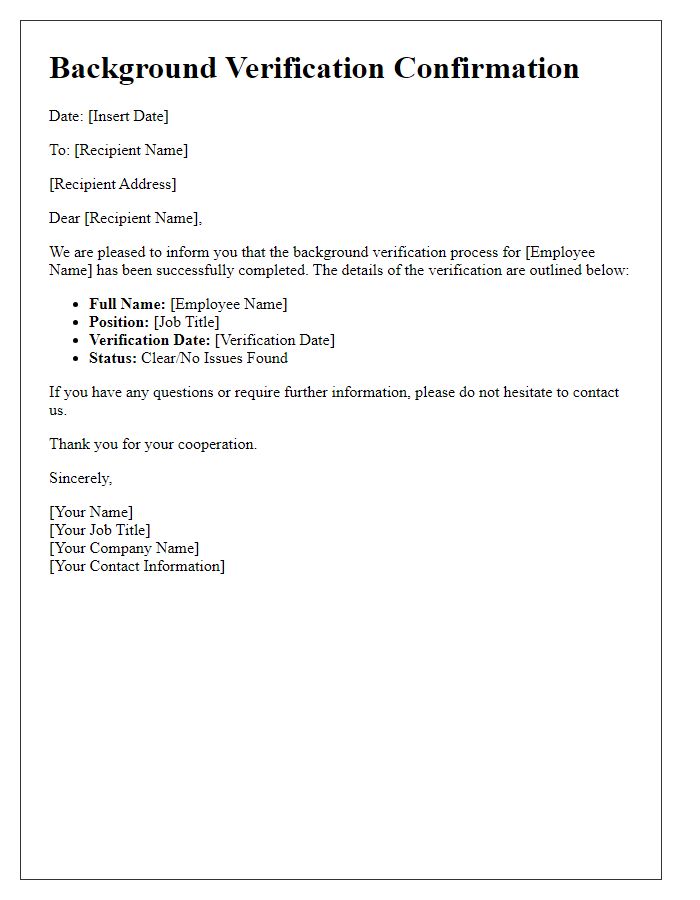
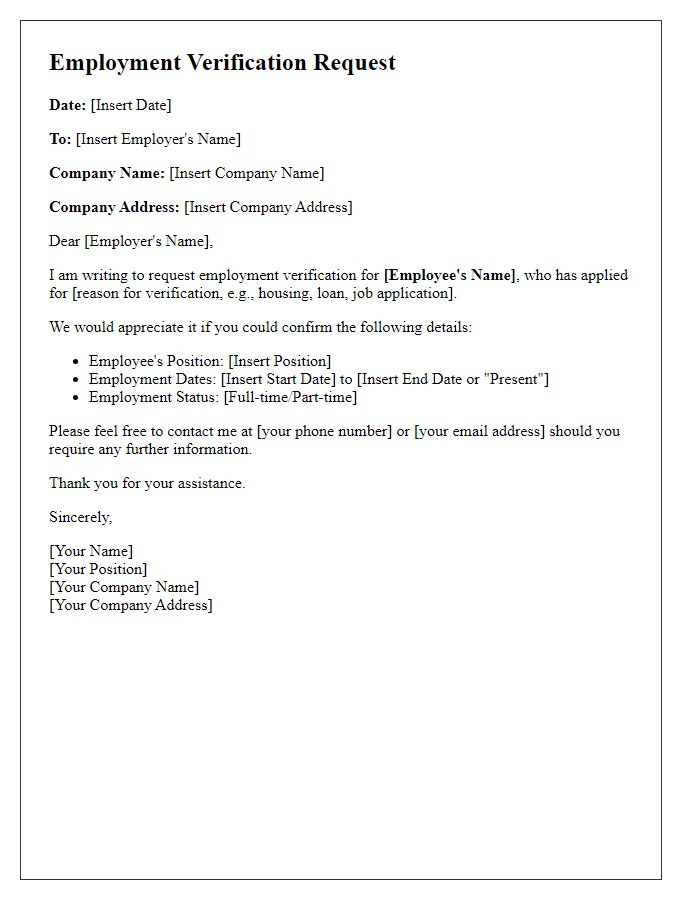
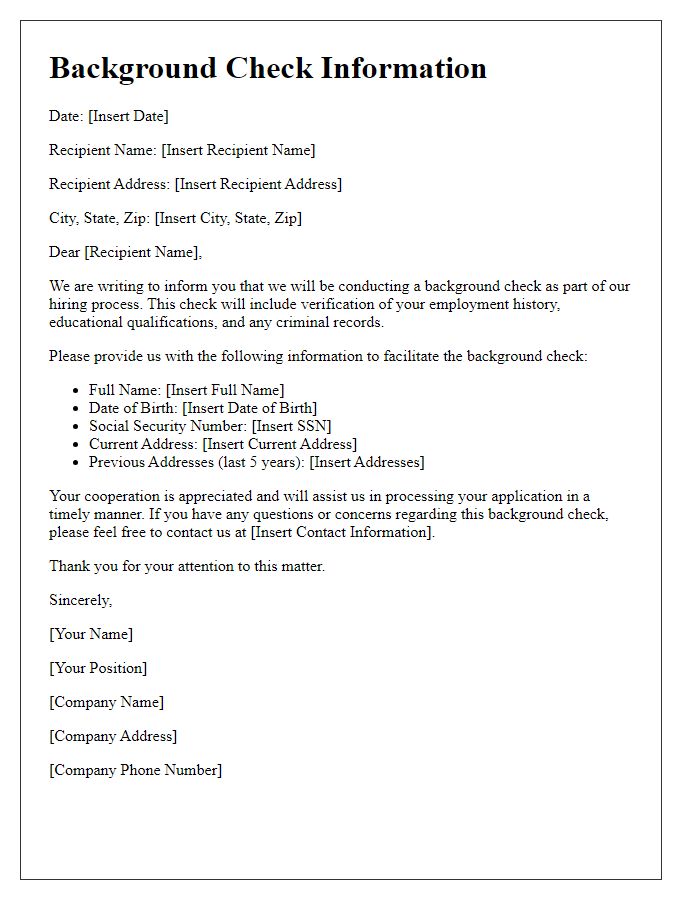
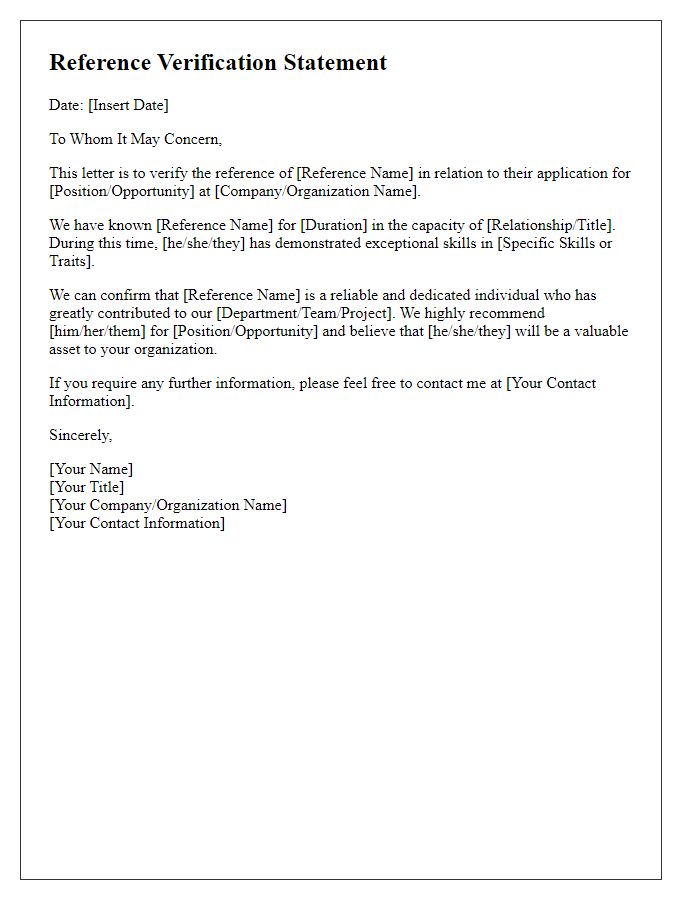
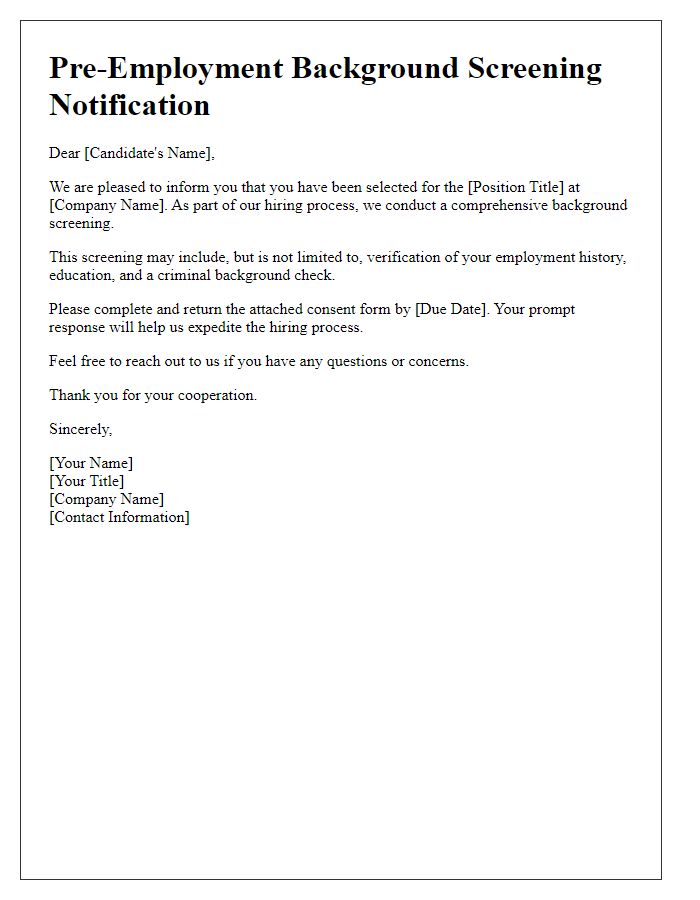
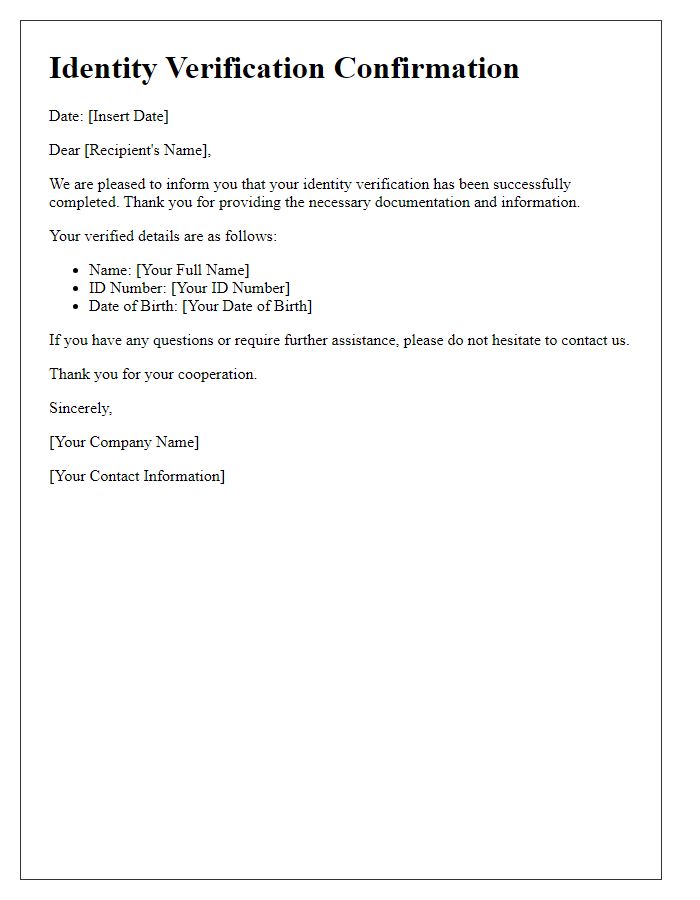
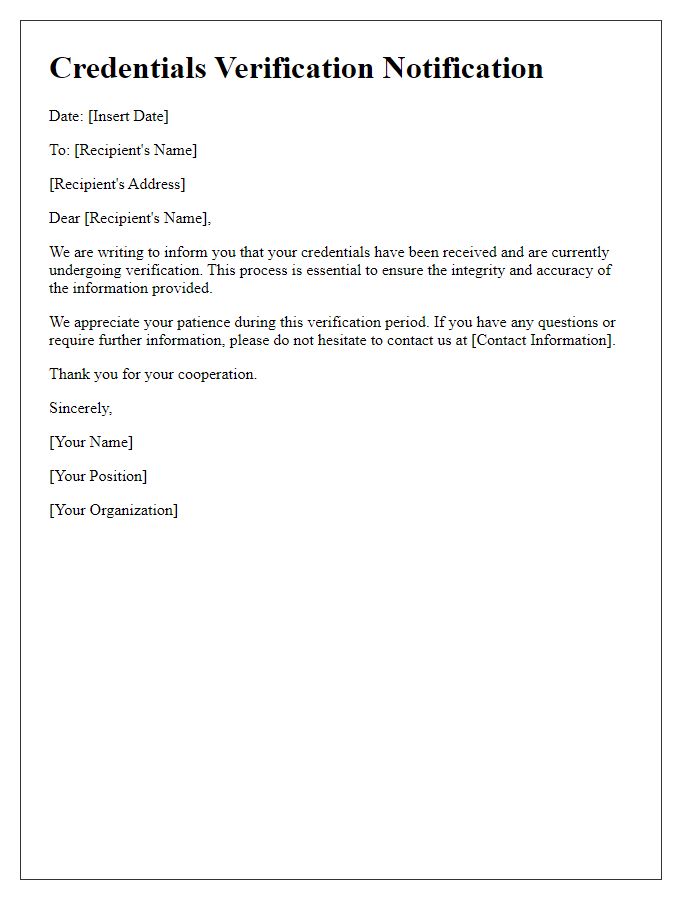
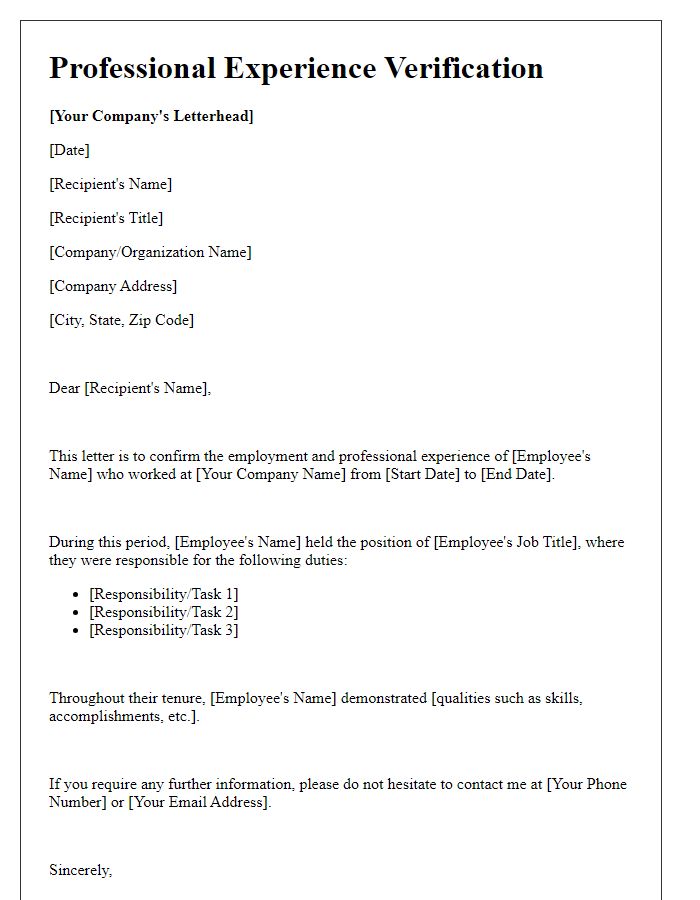
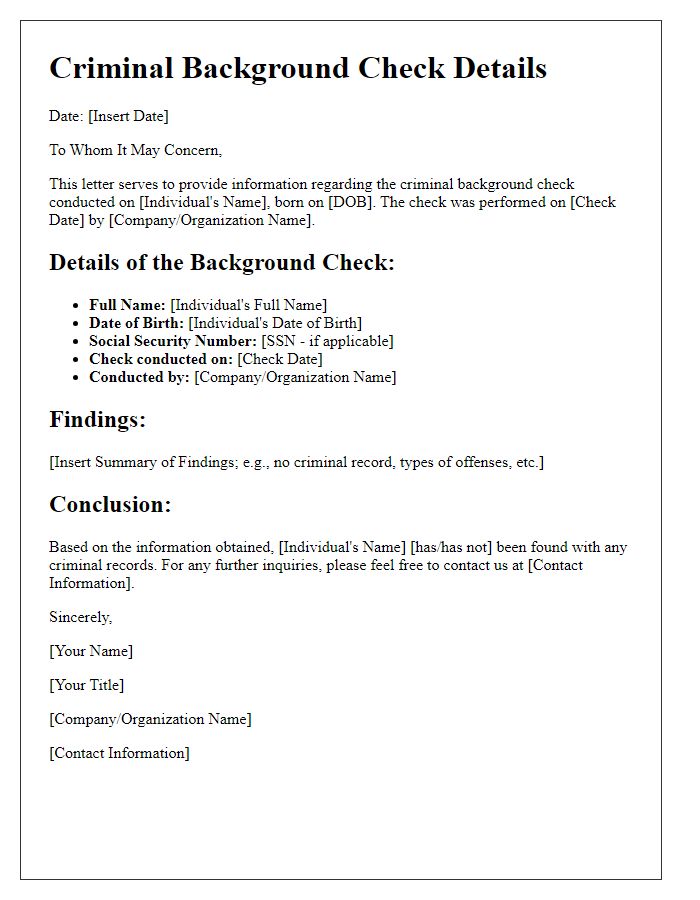
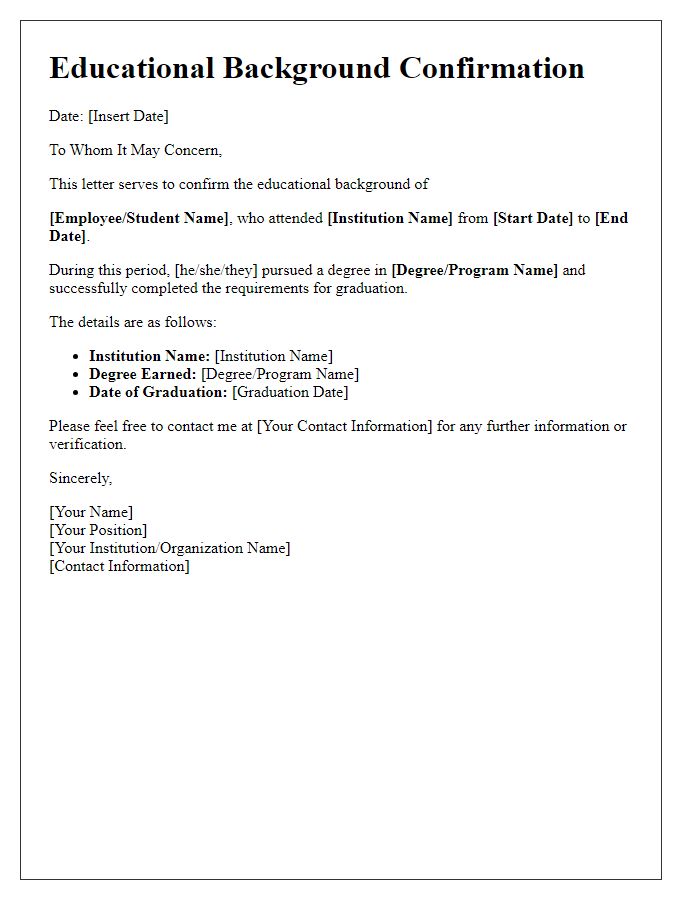


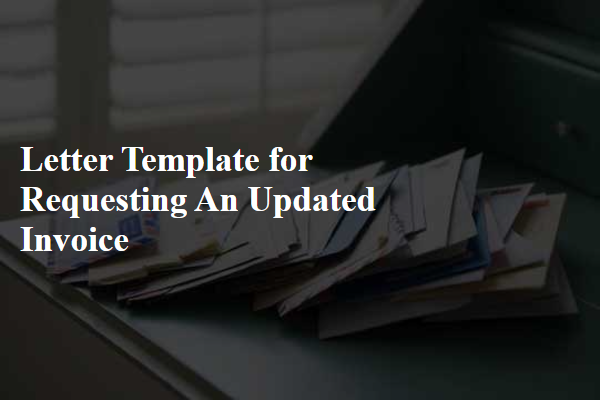


Comments